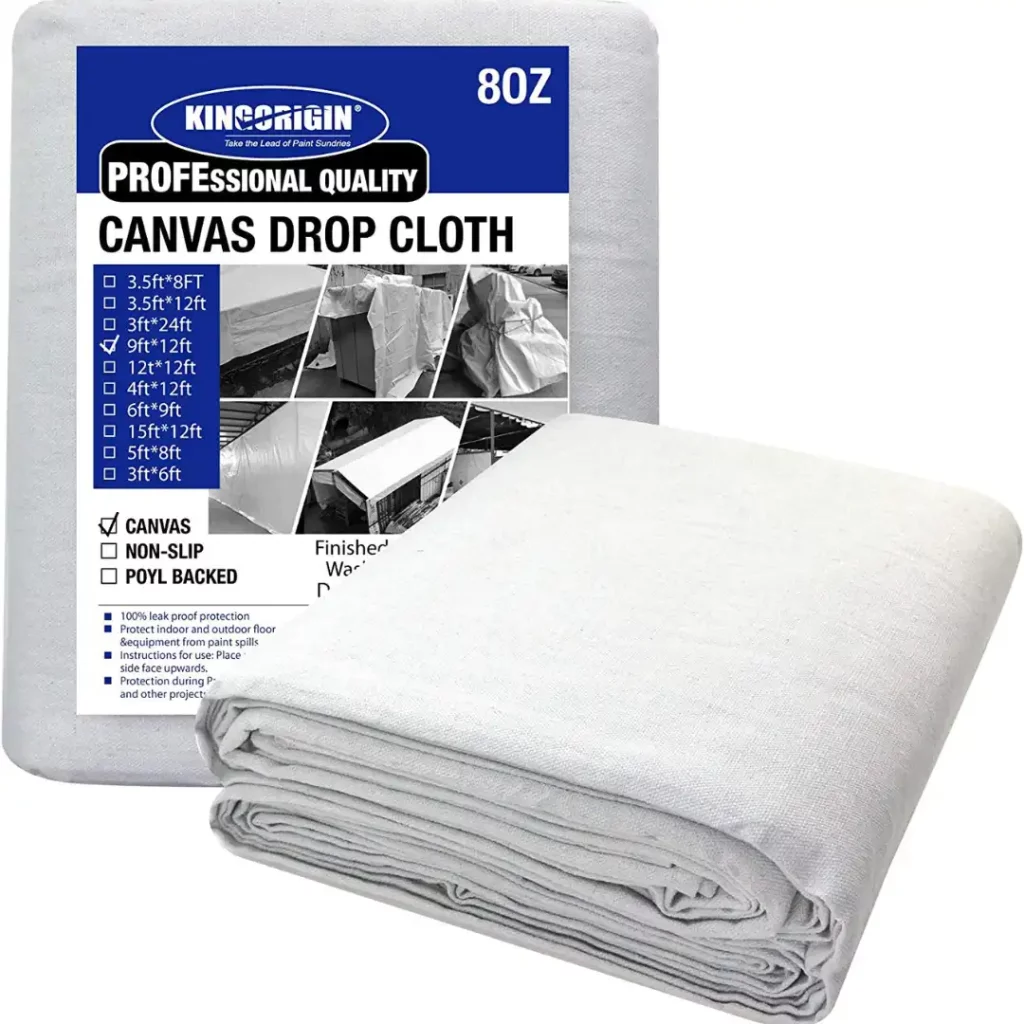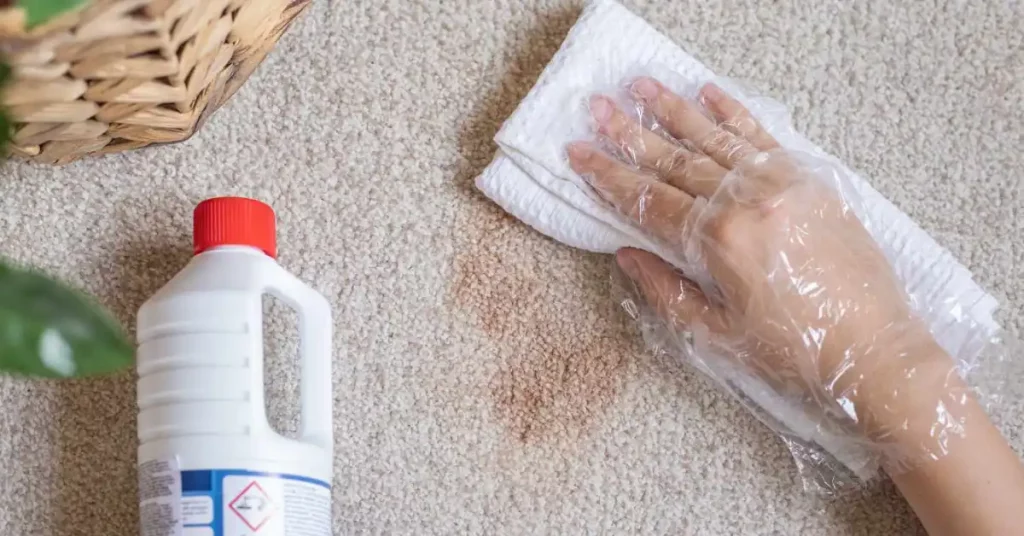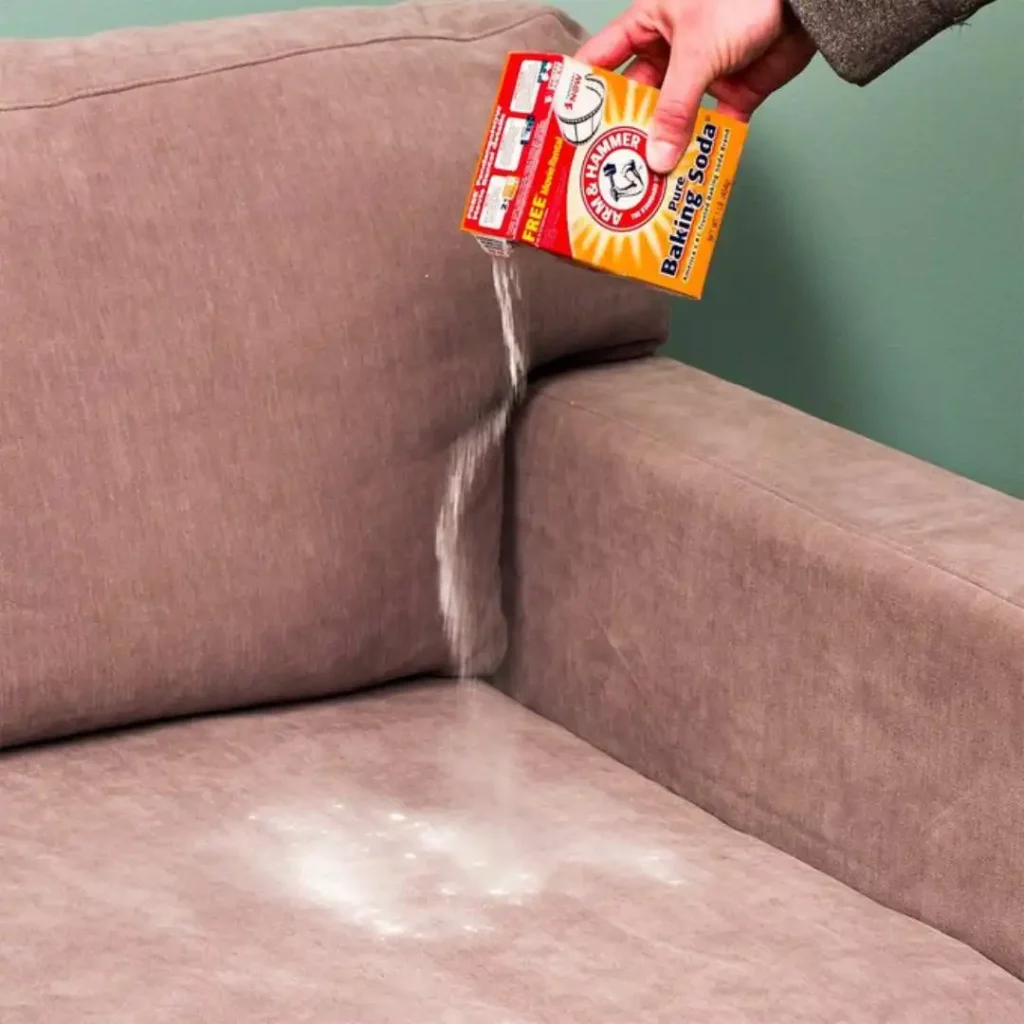A fabric sofa is a staple piece of furniture in many homes. It provides comfort, style, and a cozy place to relax. Who doesn’t love to relax on a comfy fabric sofa, having a cup of coffee after a long day at work? Or enjoying a good movie while having some snacks? The only problem is the grease and oil that can transfer from the food to the sofa. However, spills, stains, and dirt can accumulate on the fabric over time, making it look dingy and worn. While some fabrics can be cleaned with water, others require dry cleaning to avoid damaging the material. It’s really a complicated task to dry clean a fabric sofa, but with the right tools and techniques, it can be done safely and effectively at home.
In this article, we will guide you through the step-by-step process of how to dry clean a fabric sofa safely. We’ll cover everything you need to know, from the materials and tools you’ll need, to tips and tricks to make the process as easy and efficient as possible. With our help, you can keep your sofa looking clean and fresh, prolonging its lifespan and preserving its beauty.

Necessary Supplies to Dry Clean a Fabric Sofa:
Dry cleaning a fabric sofa requires specific supplies to ensure the process is safe and effective. Having the necessary tools on hand can make the task much easier and help to maintain the appearance of your sofa. In this article, we will discuss the supplies you need to dry clean a fabric sofa and explain their importance in the cleaning process.
Vacuum with Upholstery Tools
Vacuuming with upholstery tools is an essential step in dry cleaning a fabric sofa. Over time, dust, dirt, and debris can accumulate on the surface of the sofa, causing it to look dull and dingy. Vacuuming helps to remove these particles and prepare the sofa for the dry cleaning process.

Microfiber Cloth
Using a microfiber cloth is a key step in dry cleaning a fabric sofa. Microfiber cloths are designed to trap dirt and dust particles, making them an ideal tool for cleaning delicate fabrics like those found on a sofa.

Soft-bristled Brush
Using a soft-bristled brush is another effective tool for dry cleaning a fabric sofa. A soft-bristled brush can help to loosen dirt and debris that has become embedded in the fabric, making it easier to vacuum up.

Dropcloth or Tarp
When dry cleaning a fabric sofa or sofa set at home, it’s important to protect the surrounding area from any cleaning agents or debris that may come off the sofa during the process. A dropcloth or tarp can be used to create a barrier between the sofa and the floor or other nearby surfaces.

Circulating Fan
After cleaning a fabric sofa, it’s important to ensure that it dries completely to prevent any damage or mold growth. A circulating fan can be a helpful tool in speeding up the drying process by increasing airflow around the sofa.

Dry Cleaning Solvent
Dry cleaning solvent is a key component in the process of dry cleaning a fabric sofa or couch cushion. This type of solvent is specifically designed to lift and remove dirt and stains from delicate fabrics without damaging the material.

Baking Soda
Baking soda is a versatile household item that you can use to dry-clean a fabric sofa. It is a natural deodorizer and can help remove any lingering odors from the sofa, leaving it smelling fresh and clean.
Baking soda
Be Mindful of the Care Tag While Dry Cleaning a Fabric Sofa
The care tag on a fabric sofa provides important information on how to properly dry clean and maintain the sofa. It contains valuable information such as the type of fabric, cleaning instructions, and any special considerations to keep in mind. In this article, we will discuss the importance of the care tag when dry cleaning a fabric sofa and explain how to interpret the information provided on the tag. Dry cleaning works only with S and X-tagged sofas, particularly.
“S” Tag:
This tag indicates that you should use a solvent-based cleaner only for cleaning the sofa. Avoid using water or water-based cleaners, as they can damage the sofa. Always follow the instructions on the solvent-based cleaner carefully.
“X” Tag:
This tag indicates that you should only vacuum the sofa and not use any type of cleaner. Avoid using water, solvent-based cleaners, or any other cleaning products on the sofa.
How to Dry Clean a Fabric Sofa?
Dry cleaning a fabric sofa is an essential task to maintain its appearance and extend its lifespan. Over time, dirt, stains, and odors can accumulate on the sofa’s fabric, making it look dingy and unappealing. In this guide, we will discuss the steps on how to dry clean a fabric sofa using various tools and materials. By following these steps, you can safely and effectively dry-clean your fabric sofa, leaving it looking fresh and clean.
Step 1: Read the Care Tags-
Before starting the dry cleaning process, it is important to read the care tag on the sofa. This will provide valuable information on the type of fabric and the recommended cleaning instructions. Some fabrics may not be suitable for dry cleaning, so it’s important to check the care tag before starting.
Step 2: Vacuum-
Using a vacuum cleaner with upholstery tools, thoroughly vacuum the entire sofa to remove any loose dirt or debris. Pay special attention to the corners and crevices where dirt can accumulate.

Step 3: Use a Soft-bristled Brush-
After vacuuming, use a soft-bristled brush to gently loosen any dirt or debris that may be embedded in the fabric. Be careful not to scrub too hard or use a brush with stiff bristles that could damage the fabric.
Step 4: Spot Clean with Dry Cleaning Solvent-
If there are any stains on the sofa, use a dry cleaning solvent to spot-clean the affected area. Apply the solvent to a clean cloth and gently dab the stain until it is removed. Be sure to follow the instructions on the solvent’s label and avoid using too much product.
Step 5: Deodorize with Baking Soda-
To remove any odors from the sofa, sprinkle baking soda over the surface and let it sit for 15–20 minutes. Then, use the vacuum cleaner with upholstery tools to remove the baking soda. This will leave the sofa smelling fresh and clean.

Step 6: Wipe with a Microfiber Cloth
Using a clean, damp microfiber cloth, wipe down the entire sofa, paying special attention to any remaining stains or dirt. Be sure to use a gentle touch and avoid using too much water, which can damage the fabric.
Step 7: Use a Circulating Fan-
To help the sofa dry completely, turn on a circulating fan and allow the air to circulate the sofa. This will prevent any damage or mold growth from moisture that may be trapped in the fabric.
Step 8: Protect the Surrounding Area-
To protect the surrounding area from any cleaning agents or debris, use a dropcloth or tarp under the sofa while cleaning. This will prevent any spills or messes from damaging the floor or carpet.
You can watch this-
By following these steps and using the appropriate tools and materials, you can dry clean your fabric sofa safely and effectively. Regular dry cleaning can help keep your sofa looking clean and fresh for years to come.
Things You Should Remember While Dry Cleaning:
Dry cleaning a fabric sofa requires a certain level of care and attention to ensure that the process is safe and effective. There are a few things to keep in mind before and during the dry cleaning process to avoid damaging the fabric or causing any harm.
Avoid Smoking or Using E-cigarettes:
It’s important to avoid smoking or using e-cigarettes while dry cleaning a fabric sofa. Smoking or using e-cigarettes releases harmful chemicals into the air, which can be absorbed by the fabric and cause a lingering odor. Additionally, the heat from smoking or using e-cigarettes can damage the fabric, leaving burn marks or discoloration.
Protect Painted or Finished Wood Surfaces With a Drop Cloth:
When dry cleaning a fabric sofa, it’s essential to protect any painted or finished wood surfaces in the surrounding area. Dry cleaning solvents or water can damage the finish or paint on wood surfaces, leaving unsightly marks or discoloration. To prevent any damage, it’s best to cover painted or finished wood surfaces with a drop cloth or tarp while dry cleaning the fabric sofa. This will ensure that any spills or drips are caught by the drop cloth, preventing any damage to the surrounding surfaces.
Avoid Using a Hairdryer or a Heater:
It’s important to avoid using a hairdryer or a heater while dry cleaning a fabric sofa. Both of these devices can produce high levels of heat, which can damage or shrink the fabric of the sofa. Additionally, using a hairdryer or a heater can cause any cleaning solutions or dry cleaning solvents to evaporate too quickly, leaving behind unwanted residues or stains on the fabric.
DO NOT Open a Fire Nearby:
It’s crucial to avoid opening a fire nearby while dry cleaning a fabric sofa. Dry cleaning solvents and cleaning solutions are highly flammable, and exposing them to an open flame can cause a fire. Additionally, the heat from the fire can damage the fabric of the sofa or cause it to shrink, leaving unsightly marks or discoloration. To prevent any accidents or damage, it’s best to keep any open flames, including candles or fireplaces, at a safe distance from the fabric sofa while dry cleaning it.
Avoid a Fireplace:
When dry cleaning a fabric sofa, it’s important to avoid exposing it to a fireplace. The heat and smoke from the fireplace can damage the fabric, leaving unsightly marks or discoloration. Additionally, the soot and ash from the fireplace can easily stick to the fabric, making it difficult to clean. To prevent any damage or stains, it’s best to keep the fabric sofa away from the fireplace while dry cleaning it.
Conclusion:
Dry cleaning a fabric sofa can seem daunting, but with the right tools and techniques, you can do it safely and effectively. By following the steps outlined above, which include vacuuming with upholstery tools, using a microfiber cloth and a soft-bristled brush, protecting surfaces with a drop cloth or tarp, using a circulating fan to aid in drying, and using dry cleaning solvents or baking soda for tough stains, you can get your fabric sofa looking like new again.
FAQ:
What is dry cleaning and how does it differ from regular cleaning?
Dry cleaning is a cleaning process that uses non-water-based solvents to remove dirt, stains, and odors from fabrics. It differs from regular cleaning in that it doesn’t use water as the primary cleaning agent. Which makes it suitable for delicate fabrics or items that you can’t clean with water.
Can I dry clean my fabric sofa at home, or should I take it to a professional?
You should take a fabric sofa to a professional for dry cleaning, especially if it has significant stains or is made of delicate fabric. However, if the sofa is made of more durable fabric and only needs light cleaning, it may be possible to dry clean it at home using the right tools and techniques.
What kind of fabric can I dry clean, and what should I avoid?
You can dry clean most fabrics, including wool, silk, polyester, and cotton. However, it’s important to avoid cleaning fabrics that are labeled as “dry clean only” with water-based products as they may be damaged or discolored by them
How often should I have my fabric sofa dry-cleaned?
You should have your fabric sofa professionally dry cleaned every 1-2 years, or as needed to address any visible stains or odors. Regular vacuuming and spot cleaning can also help to extend the time between dry cleaning sessions.
What are the risks of not dry cleaning my fabric sofa?
Not dry cleaning your fabric sofa can lead to the buildup of dirt, dust, and other contaminants that can damage the fabric fibers and cause discoloration or odor. Over time, this can lead to a degradation of the fabric and reduce the overall lifespan of the sofa.
How long does it typically take to dry clean a fabric sofa?
The length of time it takes to dry clean a fabric sofa depends on a variety of factors, such as the size and complexity of the sofa, the type of fabric, and the extent of any stains or odors. Typically, professional dry cleaners will need to take the sofa offsite to clean it thoroughly, which may take several days to a week or more depending on the workload of the cleaner.



